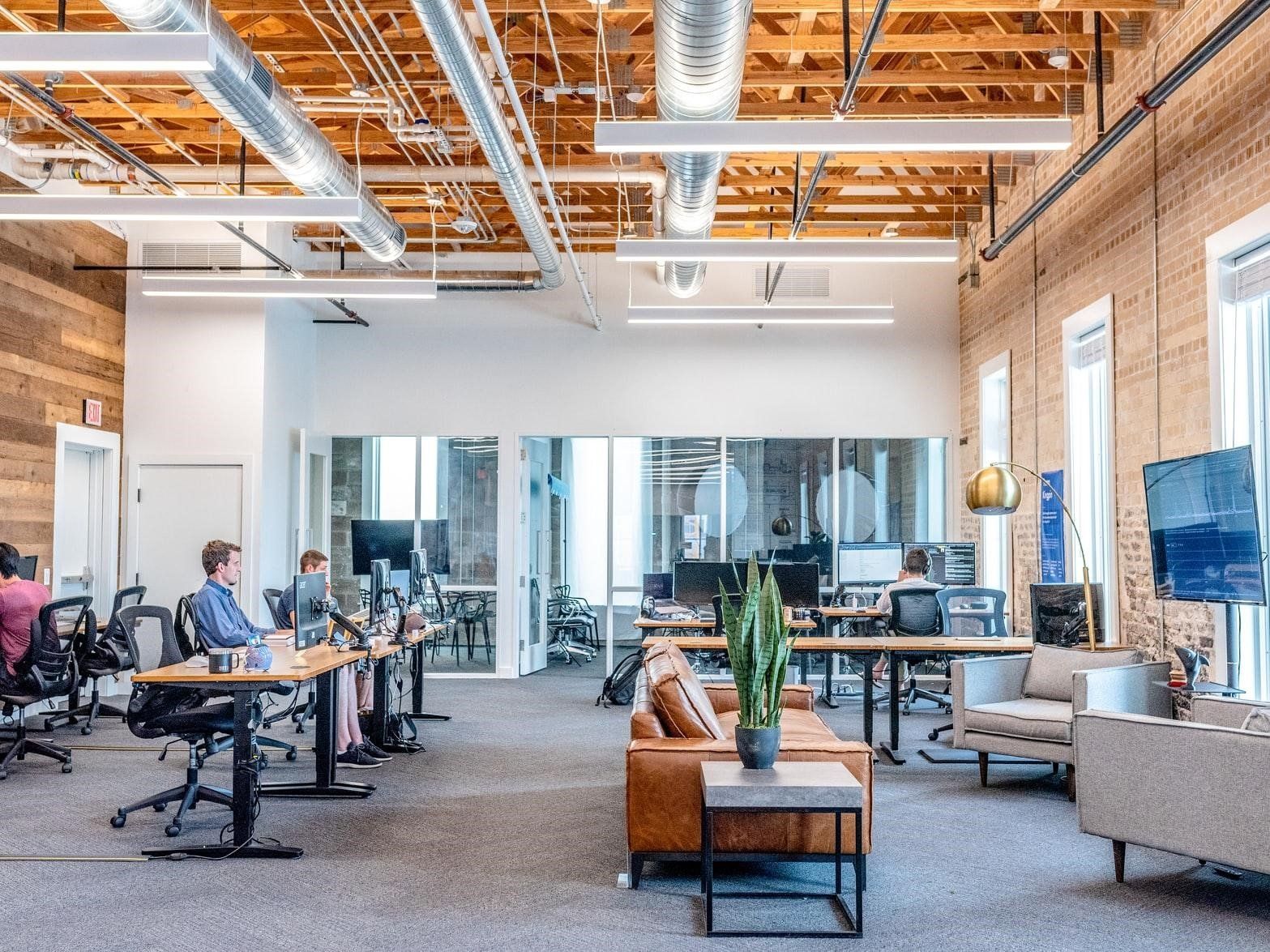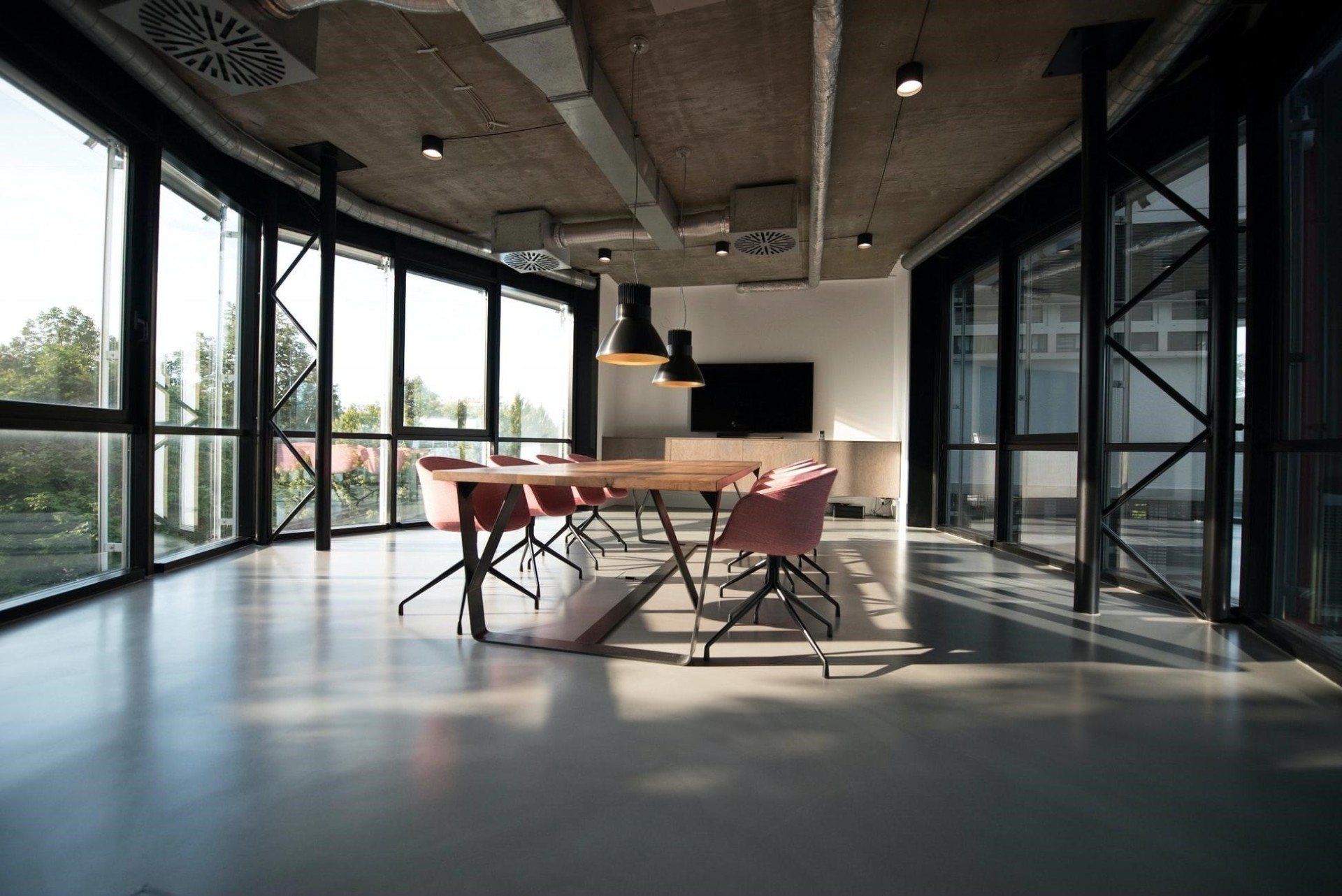Interior office lighting design
Far too often in an office setting, lights aren’t used properly. It’s easy for anyone from a contractor to a business owner to assume that bright lights are the best when it comes to creating a vibrant workspace for both customers/clients and employees. But, that isn’t always the case.
The reality is, there are more psychological aspects to lighting than most people realize. Different types of lighting can affect your mood and the way you learn. The wrong lighting can “dim” those effects, while the right lighting can give them a boost.
When it comes to the interior lighting of an office, understanding that psychology is important. Your commercial lighting system can have an impact on how productive your employees are and how your clients might feel when they step into your commercial space.
With that in mind, let’s look at a few things you should know about interior office lighting design, and how to optimize it for your business.
Understanding ‘Bad’ Office Lighting
It’s important to understand that bad lighting doesn’t necessarily mean less lighting. According to the U.S. General Services Administration, there are actually certain standards offices must provide when it comes to adequate lighting. The current requirement is 500 lumens per square meter. That typically means a standard office cubicle needs the power of a 35-watt bulb.
But, the more you understand about “bad” lighting in the office, the more you can create a lighting design that works best for your employees. Bad lighting often includes lights that are too bright or on the wrong spectrum. You can learn more about bad lighting by watching the video below.
Bad lighting in the office can cause a variety of different health issues when it comes to your employees. It can affect the following:
- Sleep
- Mood
- Productivity
- Eye strain
Poor lighting can also impact the work of your employees, causing more potential errors. So, what can you do to create a lighting design that gets rid of some of these effects and instead promotes productivity and health?
Natural Lighting and Open Workstations
Natural light is always one of the best options for workspaces. It can improve people’s moods and make them feel more productive. But, that isn’t always an option for every office, depending on your location.
If your office space doesn’t have a lot of windows or skylights, mimicking the effects of natural lighting is possible. If you’re trying to get the same health benefits as you would from natural lighting, choose daylight colors for your office. Color temperature is measured in Kelvin (K), and daylight temperatures typically range from 5000K-6500K.
Cool white colors are the next best thing, but try to avoid warm lighting. While you might think it would provide a sense of comfort and ambience to your office, it could be creating the opposite effect. Warm lighting also tends to feel very artificial. So, it’s harder to reap the same benefits as your employees would from natural lighting.
Another option is to open up your workspace. This involves creating an open-plan area instead of having each employee work in an enclosed cubicle. Having a more open plan allows for more ambient, natural lighting between each worker, while areas like hallways and separate offices are kept dimmer. This encourages your employees to stay in the more naturally-lit areas to talk, have meetings, etc. That can help to boost productivity and spark creativity.
Choosing the Right Lights for Your Office
Chances are, you’re not going to be able to completely rely on natural lighting all the time. So, choosing the right interior lighting design can make a big difference. Now that you know more about the importance of color temperature, which styles should you implement into your office space?
Here are some tips to keep in mind:
- Choose the same color temperature throughout the entire office when it comes to overhead lighting. Even a few ‘warmer’ bulbs can impact the atmosphere of your office space.
- Supplement your overhead bulbs with task lighting for each desk. But, make sure those bulbs have a low glare that won’t negatively impact your employees’ eyes.
- The color of your office can also have an impact on the way the lighting looks. Choose neutral colors for your office walls to help reduce glare and reflection.
- Make sure you’re using the right size when you’re picking out bulbs. Lightbulbs are not a “one size fits all” solution. Thankfully, distinguishing which type of bulbs you should get is as simple as considering the size of your office. If you have a smaller space, choose smaller bulbs, and vice versa.
Keeping Energy Efficiency In Mind
In addition to keeping the overall look and feel of your office lighting in mind, it’s important to be environmentally conscious. Some state laws are actually requiring offices to hold themselves accountable for energy efficiency, as shown in California’s Title 24 code.
Thankfully, there are plenty of choices to help you save energy on lighting within your office space.
The most popular energy-efficient lightbulbs are LEDs and CFLs. Both are easy to find and install, and will not only save on your energy waste, but they can save you money on your utility bills, as well.
Additionally, utilizing things like photocells or timers can help you to save energy by turning off the lights when they’re not in use.
As you can see, there is a lot to consider when it comes to interior office lighting design. If you’ve never considered how the lighting in your office could be impacting your clients, your employees, or even the planet, now is the perfect time to take notice and make positive changes as needed. Keep some of these office lighting design tips and tricks in mind to encourage health and productivity within your company. You might be surprised at how much the lighting you choose makes a difference in everyday operations.



